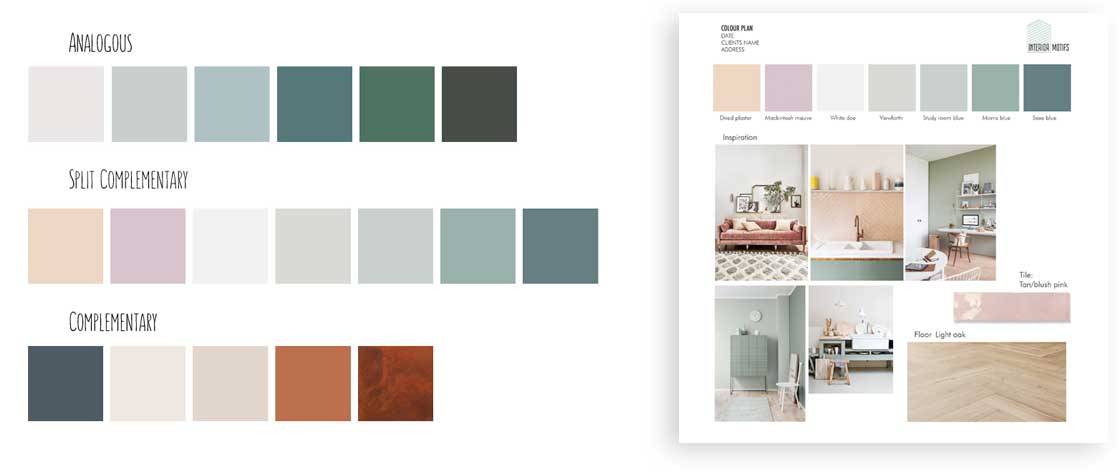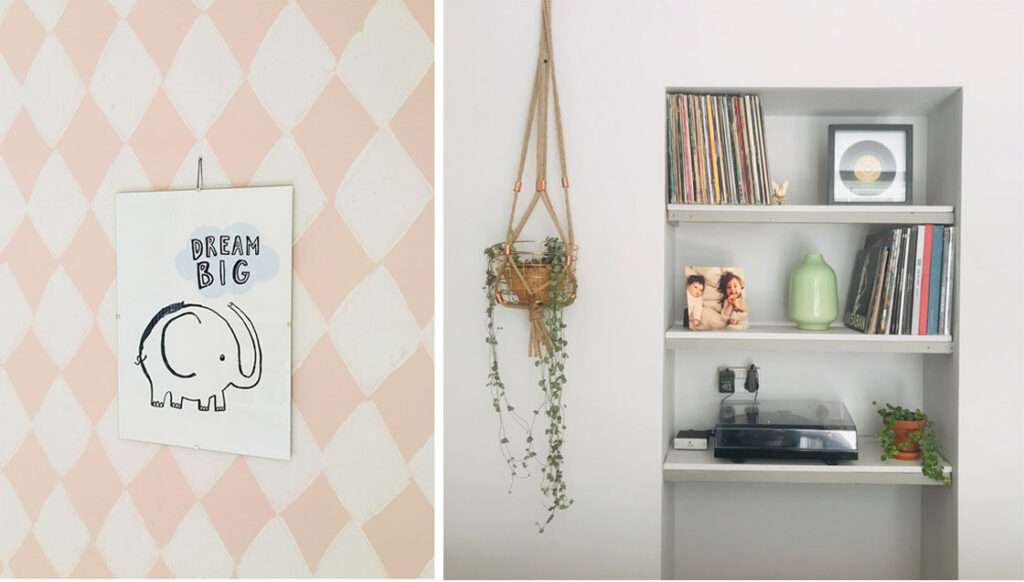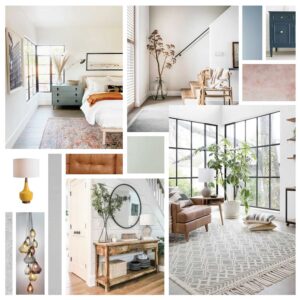HOW TO DESIGN A ROOM (from a professional designer)
It’s easy to be captivated by the stunning pictures on Instagram and in interior magazines, making it seem like anyone can effortlessly create a beautifully designed room. But, appearances can be deceiving. While those pictures may be visually pleasing, they often represent only a fraction of the room and overlook the crucial element of functionality. Designing and planning a room involves a multitude of interconnected factors that go beyond just colours, products, and styling.
For most people, the thought of designing a room themselves can be overwhelming. Even if it’s your first attempt, mistakes are bound to happen, but trust me, it’s an incredibly rewarding journey once you get the hang of it. With each room you tackle, you’ll get better and better.

In this article, I have compiled a list of essential questions you should ask yourself before starting your room design. And whilst every designer has their unique approach, we all follow an essential set of steps during the design process. I am here to provide insights on how to design a room like a professional with the steps outlined below serving as the fundamental ingredients for creating a visually stunning room.
Interior Design Space Planning
When it comes to starting a project, I typically begin with either space planning or the creation of a mood board. Personally, I find 2D floor plans insufficient for achieving a well-designed room layout, as spaces are
three-dimensional.
To effectively visualise a room, I prefer to work with 3D layout plans. This approach allows me to showcase the height of items and the positioning of elements such as art pieces, shelving, and bookcases. Most importantly, you’ll get a real impression of what your room will look like, once finished.
In fact, I often develop at least three layout ideas for a house, each with variations in room arrangement. For instance, I might consider replacing a sofa with two chairs or substituting a tall bookshelf with floating shelves.
Creating varying heights within a room is vital for visual appeal. Placing items solely below eye level on one wall can be visually unattractive. There are several ways to introduce height. You can achieve this by incorporating wallpaper, hanging art pieces, introducing strategic lighting, or utilising other wall decorations.

Here are a few layout tips to ensure you create the perfect room design:
Pay attention to the space around furniture and its sizing. It’s important to have enough space to comfortably sit on the sofa without bumping into the coffee table, while still keeping it within arm’s reach of your morning cuppa. Generally, a gap of around 40 cm between them works best.
Ensure that your rug fits under the front feet of the sofa and chairs. In general, larger rugs tend to work better, as long as they don’t touch the walls.
Placing art should be one of your final steps. Art can fill up empty wall spaces and make a statement, so consider creating a gallery wall or using an extra-large frame to leave a lasting impression (For more on this topic, check out my blog on wall galleries).

After presenting my layout ideas to the client, they will choose their preferred plan, which I’ll then refine in more detail during subsequent stages of the design process.
If you’re interested in learning more about dimensions, heights, distances, and spacing within a room, I invite you to download our Dimension Guide.
Mood board for Interior Design
What is the purpose of a mood board?
A mood board serves as a visual representation of the desired look and feel of your room and is a crucial starting point that guides you throughout the design process.
Getting your mood board right is essential, as it becomes your guiding principle throughout the entire project. One great tool to kickstart your mood board is Pinterest, which is great for inspiration.

Create a Pinterest board and save images of rooms, colours, and materials that you love. Once you’ve collected around 30 images, take a closer look at your board and identify any commonalities among your pictures. Analyse them and search for additional images that complement your favourite ones.
Remember, your mood board is a work in progress, so you’ll continue to refine and add to it over time.
As a professional, I can put together a mood board within 30 minutes, but if you’re new to this, take your time and work on it gradually over a week.
Once your Pinterest board is ready, consolidate all your images onto a single page and start crafting your mood board, I do this in Adobe InDesign. Select products that speak to your desired style, include colours that captivate you, and capture your overall look and feel.
If you’re eager to design a room and create your mood board, I have created a downloadable tutorial specifically for you. This tutorial can be completed online or printed out for your convenience. It features numerous examples of various mood boards to demonstrate what works and how to achieve a professional result.
To access the tutorial, simply click here.
Start crafting your mood board and unlock your creativity in designing the perfect room.
But keep reading for more valuable insights on colour palettes and styling.

Interior Design Colour Schemes
Creating a harmonious colour scheme for your home involves various factors such as colour theory, lighting conditions, window placement, and the size of the room. Without going into all the intricacies and boring you for hours, I have narrowed it down and shared the top tips that I personally use.
Colour Palette Ideas
If you’re unsure where to begin with choosing colours for your room, I recommend scrolling through Pinterest and saving all the colour schemes you absolutely love on a dedicated board.
Pay attention to the schemes that excite you. What lights a spark within you? It should be something you instantly fall in love with.
Aim to gather at least 20 pictures, and then take a look at your board. You may notice a recurring colour or a common theme emerging. It could be earthy tones, a mix of white with pops of vibrant colours, or a serene and neutral palette.
Find what resonates with your personal style and the mood you want to create in your room.

Paint Colour Ideas
Many people are naturally drawn to a specific colour so if you already have a colour in mind, that’s a great starting point.
Now, you need to find complementary colours that match well and evoke the desired atmosphere in the room.
Paint companies like Farrow & Ball and Little Greene often showcase matching and complementary colours on their websites, providing valuable inspiration and paint colour ideas.
Wall Colour Combinations
Certain wall colour combinations always work well together. Here are a few examples:
Explore different shades of blue to create a soothing and calming ambience.
Embrace the freshness and tranquillity of various green hues.
Infuse warmth and energy into your space with shades of red.
Opt for versatile neutral colours that provide a timeless backdrop.
Experiment with different shades and tones of a single colour to achieve a sophisticated monochromatic look.

Interior Design Colour Palette
Remember, colours aren’t limited to just the walls. Your colour palette should encompass your entire room, including your sofa, soft furnishings, wallpaper, and more. When creating a colour palette, consider all these elements in conjunction with your wall colour. The wall colour is just one part of the overall composition.
60 30 10 Rule
A popular guideline among interior designers is the 60 30 10 rule, which helps distribute colours throughout your room. The main colour should occupy approximately 60% of your space, applied to walls, the sofa, the rug, and possibly the ceiling. Remember, you can use different shades or tones of the same colour within this 60% range. The secondary colour should account for about 30% of the room and can be applied to elements like curtains, accent chairs, cushions, patterns in the rug, lamps, and art. Finally, the remaining 10% should be dedicated to small items, such as a vase, cushion, art, plant pot, or picture frame. Ensure that all colours are evenly dispersed throughout your room.

Pairing Colours
Avoid using the exact same colour in every aspect of your room. Instead, create depth and interest by selecting different hues or shades within the same colour family. For example, pair a forest green wall with an olive green sofa and a pastel green plant pot. This approach adds visual dimension and keeps the room visually engaging.
North Facing Rooms
Many clients struggle to find the right colours for north-facing rooms. In these rooms, the light tends to make colours appear cooler and more blue than what you selected at the paint shop.
Warm-toned colours, such as creams and reds, work best in such spaces. Avoid using a brilliant white; instead, opt for a white with a yellow undertone. True greys may appear bluish, so if you prefer a true grey, choose your paint with yellow and red undertones,
On the bright side, the advantage of a north-facing room is its consistent lighting throughout the day, which ensures that colours remain stable and consistent.

Styling A House
Interior Design Styles Explained
Differentiating between styling a room and selecting a design style is crucial.
Styling focuses on achieving a finished, cosy, and accessorised look, while design style refers to the overall aesthetic you want to establish in your room.
While there are numerous interior styles to explore, I personally love to use an eclectic approach, which involves skillfully blending various styles together.
When executed well, an eclectic mix doesn’t appear messy, instead, it exudes a sense of accomplishment. I love incorporating second hand furniture pieces and giving them a modern twist through fresh paint colours. Older items add character, ensuring your space remains unique and personalised.
Once your design style is established, the final step is to style your room. Styling a house encompasses the finishing touches that make the space appear accomplished, cohesive, and thoughtfully curated. When styling a room, I consider several factors to achieve exceptional results including:
Follow the ‘rules’ of the particular interior style you are working with. For example, if you’re going minimalistic, place only a few accessories. If you love mid-century, make sure you look at the specific shapes that fits within that particular style.
Consistency in your colour scheme creates visual harmony and should be carried through in your accessories
The strategic arrangement and accessories creates a balanced composition.
Consideration of focal points, ambience, and texture enhances impact and the overall atmosphere.

Home Styling
For home styling inspiration, you don’t have to reinvent the wheel as there is a vast array of resources available. Pinterest serves as an excellent platform for gathering home styling ideas.
I love picking up interior magazines from different countries, to see diverse trends and styles. Additionally, browsing online through exceptional hotel rooms or holiday homes can spark creativity. Just keep it personal and stay true to your love for certain colours, art and style. And dare to be different, nobody wants a boring all grey home.

When it comes to home styling, consider the following interior design tips:
Introduce patterns, colours, and textures through accessories to add depth to the room.
Embrace the “less is more” principle… unless you’re a maximalist. Invest in a couple of pieces that are well-designed and really stand out. For example, a beautiful table lamp paired with a captivating piece of art.
Personalise your space by incorporating items that are “you” and reflect your interests and passions, such as displaying an old camera if you love photography or showcasing vases with dried flowers if you appreciate floral arrangements.
Opt for ambient lighting and reduce the reliance on overhead lights. Strategically placed floor, wall and table lamps create a more inviting atmosphere.
Incorporate plants as they always enhance a room’s aesthetics, and choose plant pots that complement your interior colour scheme.
Select home styling items you genuinely love, as anything else may lose its appeal over time.
Maintain consistency by utilising the same hardware material throughout your home, fostering a sense of coherence.
When in need of additional colour, consider using cushions, rugs, vases, and art to inject vibrancy into your space.
Create visual interest by layering accessories, such as placing a plant slightly in front of a frame or positioning a candle in front of a mirror on the mantelpiece.
Keep the “magic number” of three in mind when arranging items, such as pairing a vase, picture frame, and candle together. Stack 2 books with an ornament on top.

Conclusion
I hope this article provides you with inspiration and insights into the room design process. On average, it takes me around 20 hours to design a medium sized room from start to finish, excluding installation.
I’m very interested to know how you design your own space, so please feel free to share your experience in the comments below 


